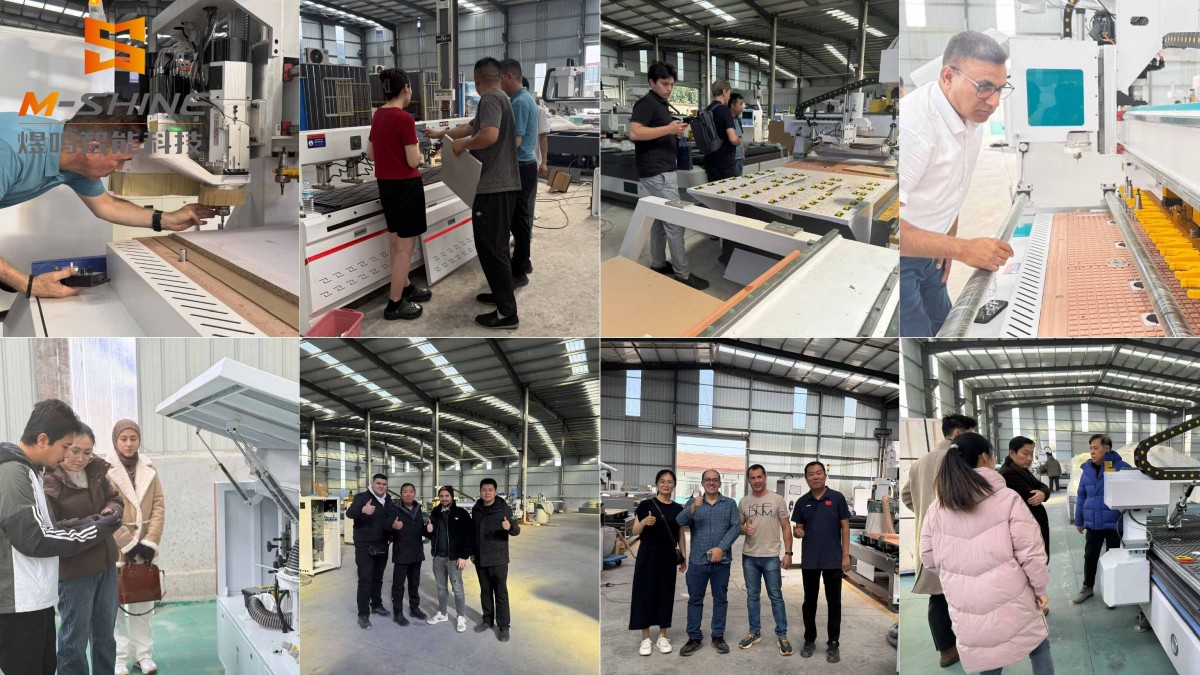
Edge Bander is the core equipment for panel furniture manufacturing, and its importance is reflected in three aspects: firstly, to ensure quality, to prevent the exposure of panel substrates and the release of harmful substances through precision edge sealing, and to enhance aesthetics and durability; The second is to improve efficiency. Automated assembly line operations far exceed manual labor and are the key to large-scale production; The third is to enhance product competitiveness. High quality edge banding technology directly improves the overall grade and market value of furniture. It plays a crucial role in current industries such as furniture manufacturing and whole house customization. There are many types of enclosed machines, and below we will introduce the application of a multifunctional eight process Edge Bander in production and daily life.

◆Firstly, let's have a brief understanding of the eight core processes of Edge Bander
The eight process refers to the eight continuous and automated processing steps designed by this machine for the edge sealing process of a sheet metal. These eight processes are usually arranged in sequence, and all operations can be completed with one pass of the board. The following are the standard eight processes and their functions
1. Pre milling:
Function: This is a crucial preparation process before edge sealing. It uses high-speed rotating milling cutters to trim and straighten the edges of the sheet metal.
Purpose: To eliminate the possible edge breakage, unevenness, or small errors that may occur during cutting of the board, ensuring that the edges are straight, smooth, and at a 90 degree angle. This is the foundation for achieving high-quality edge sealing. If the edge is uneven, the edge sealing tape cannot fully adhere.
2. Gluing:
Function: Melt solid PUR or EVA hot melt adhesive through a heated glue pot, and evenly and continuously apply the adhesive to the pre milled edges of the board through a roller or spray device.
Purpose: To provide a strong medium for the bonding of edge banding and board.
3. Belt delivery/pressure pasting:
Function: Automatically send out a fixed length of edge banding tape from the edge banding tape roll and accurately press it onto the edge of the glued board. At the same time, the front back saw will move and cut off the edge banding.
Purpose: To achieve automatic feeding and preliminary positioning bonding of edge banding.
4.Rough revision:
Function: After the board passes through, the high-speed milling cutter will trim off the excess parts at the front and rear ends of the board that are flush with the end face of the board.
Purpose: To preliminarily handle the margin in the length direction of the edge banding.
5. Refinement:
Function: On the basis of rough trimming, more precise trimming is carried out on the front and rear ends of the edge banding to ensure that the ends are perfectly flush with the side of the board, and the transition is smooth and seamless.
Purpose: To achieve higher end processing accuracy and aesthetics.
6. Track trimming and trimming up and down:
Function: This process mainly deals with the excess part of the edge banding on the upper and lower surfaces of the board. The trimming knife will accurately move along the upper and lower contours of the board, milling off excess edge banding.
Purpose: To make the thickness of the edge banding completely consistent with the surface of the board, so that the steps cannot be felt by hand touch, achieving a seamless effect.
7. Scratching edges:
Function: Use one or more scrapers to scrape and clean the extremely small glue lines or burrs that may exist after trimming.
Purpose: To further ensure the smoothness and cleanliness of the joint between the edge banding and the board, and to enhance the visual and tactile texture.
8. Polishing:
Function: Use a polishing device such as a cloth wheel or wool wheel, combined with polishing wax, to perform high-speed grinding and polishing on the already trimmed edge banding.
Purpose: To eliminate all small processing marks, so that the edge of the sealing presents a glossiness and feel similar to the surface of the board, achieving a high degree of aesthetics

◆ After paying attention to the specific division of labor for each process, let's now learn about the overall advantages of the Edge Bander for the eight processes
Compared with Edge Banders with fewer processes (such as four or six processes) or manual edge banding, the advantages of the eight process Edge Bander are very obvious, mainly reflected in four aspects: automation, precision, efficiency, and finished product quality.
1. Extremely high automation and production efficiency
Integrated assembly line operation: From pre milling to polishing, all processes are completed in one go without the need for equipment replacement or manual intervention. Greatly reducing the processing time of individual boards, it is very suitable for mass and large-scale production.
Reducing manual dependence: reduces the skill requirements and labor intensity of operators, allowing one person to guard multiple devices and reducing quality fluctuations caused by unstable manual operations.
2. Excellent edge sealing quality and precision
Complete processes, each performing its own duties: Each process is dedicated to solving a specific problem. Pre milling ensures a smooth foundation, tracking and trimming ensures seamless up and down, and polishing ensures the final gloss. This division of labor ensures that every detail is professionally handled.
Tight seams and high aesthetics: It can achieve a seamless edge sealing effect with almost no visible glue lines, and the end treatment is clean and neat, achieving the overall sensory requirements of high-end customized furniture.
3. Powerful functionality and flexibility
Handling multiple materials: capable of handling various edge banding materials, such as PVC, ABS, acrylic, wood veneer, solid wood edge banding, etc.
Adapt to complex shapes: The tracking and trimming function enables it to not only handle straight edge boards, but also better handle the edge sealing of irregular curved boards, making it more versatile.
4. Long term process stability and reliability
Professional eight process equipment usually adopts a more robust bed structure, more precise transmission system, and more stable CNC system, which can ensure high-precision machining quality even under long-term high load production.
The eight process Edge Bander is one of the core equipment on modern panel furniture production lines. It achieves the ultimate in edge sealing through eight interlocking automated processes, ensuring high efficiency, high quality, and high consistency in production. For furniture manufacturers who pursue product quality and economies of scale, choosing an eight process Edge Bander is an important step in enhancing competitiveness.
I hope the above analysis by JINAN M-SHINE can help you fully understand the eight process Edge Bander.
Contact Us:
Jinan M-shine Technology Co., Ltd.
Top ATC CNC Router Manufacturer
- Woodworking Engraving Machine
- Woodworking CNC
- Rotating Saw Blade Woodworking Machine
WhatsApp/WeChat: +8618766144006
Email: info@m-shine.com
Official Website: www.m-shinetech.com
#m-shinecnc#multihead #atccncrouter #cncrouter #woodcncrouter #drillingbank #sawbalde #woodcutting #rotatesaw #cncmachine #woodrouter #atcmachine

Related Posts
Online Message


